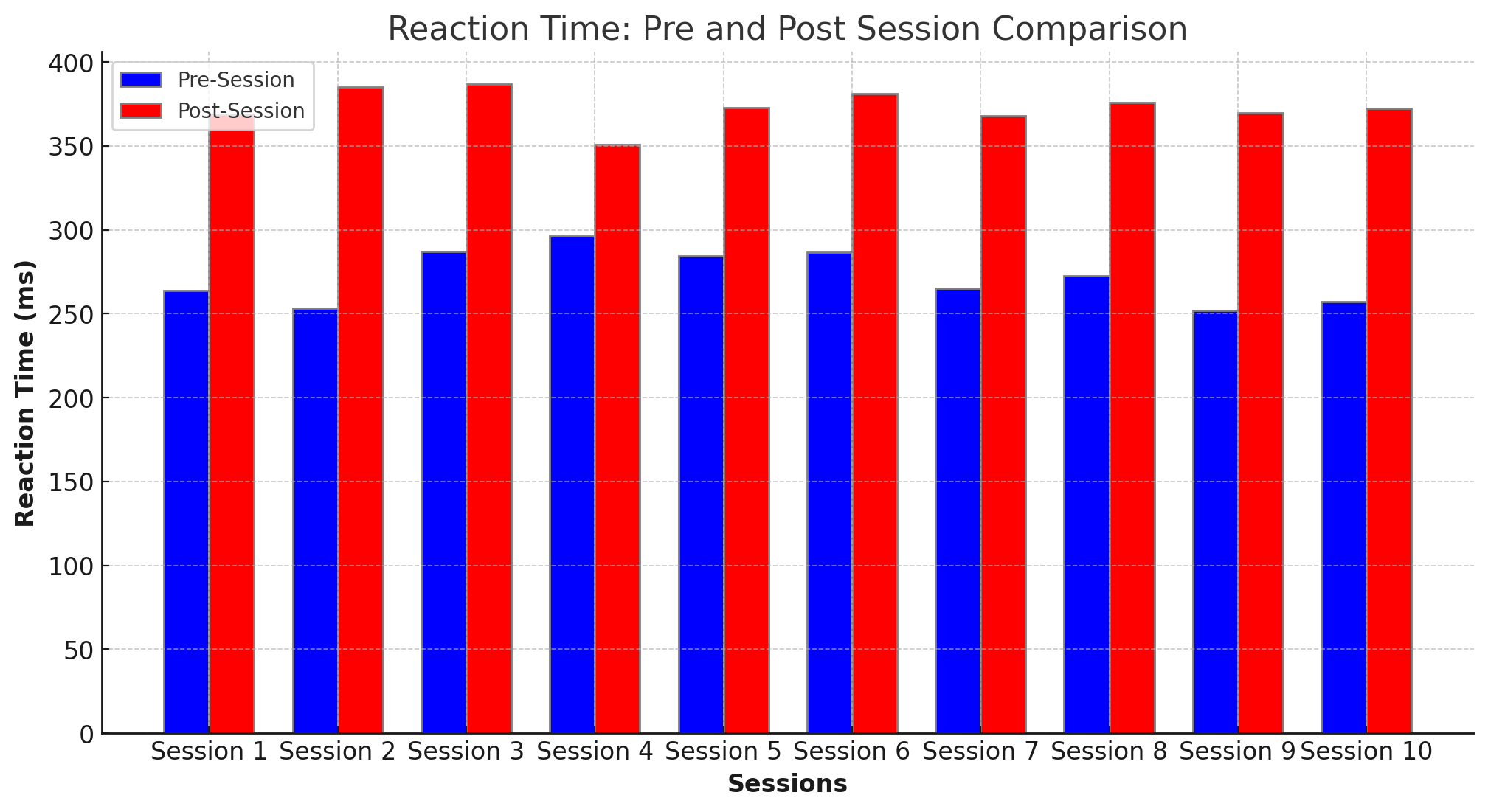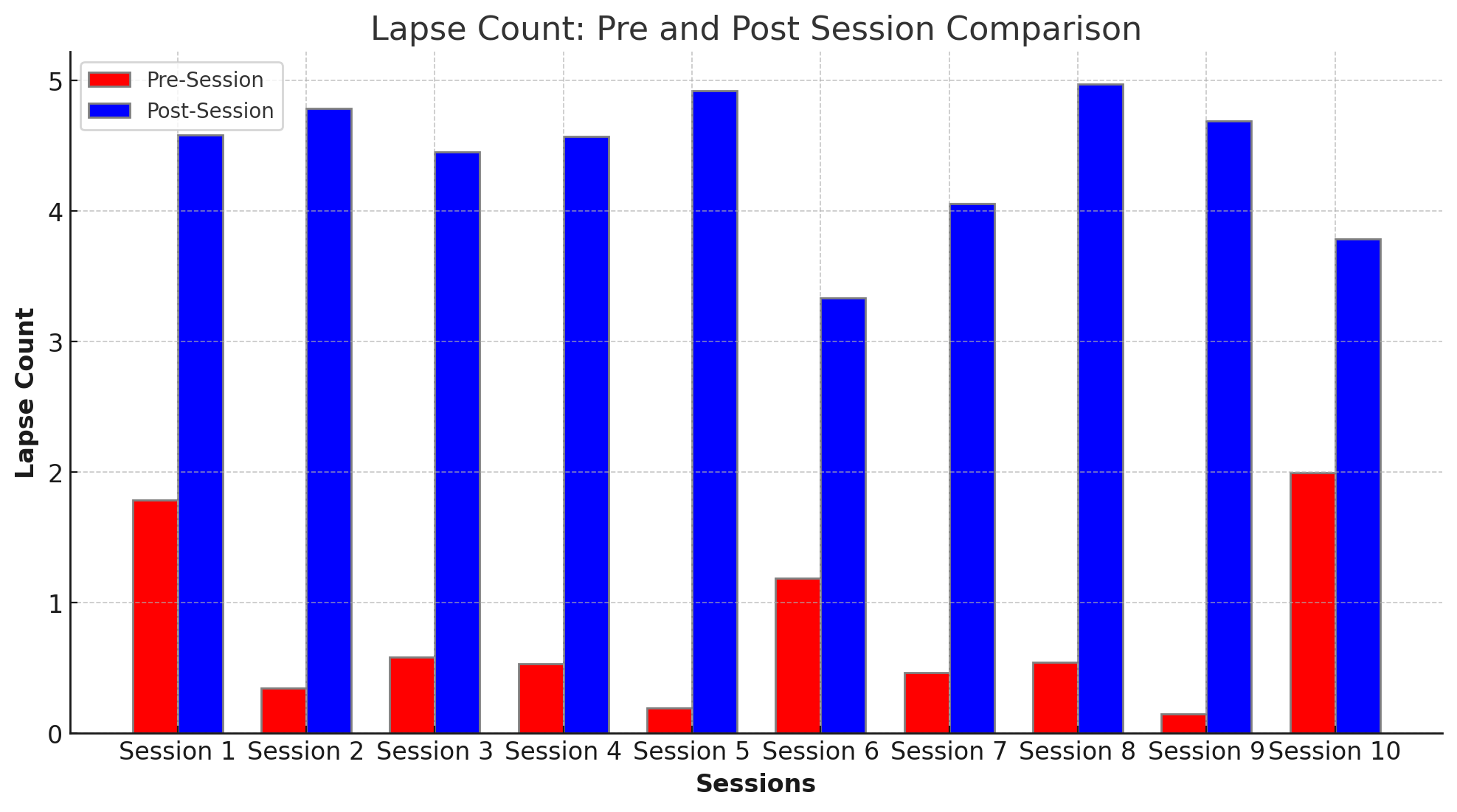Monitoring an Athlete's Fatigue Levels After a Concussion
Cognitive tests, such as the Psychomotor Vigilance Task (PVT) and its abbreviated form, PVT-Brief (PVT-B), play a key role in tracking mental fatigue.

Recovery from a concussion is a crucial period for athletes, involving not only physical healing but also meticulous monitoring of mental well-being. Given the brain's sensitivity after a concussion, assessing cognitive strain is essential. Cognitive tests, such as the Psychomotor Vigilance Task (PVT) and its abbreviated form, PVT-Brief (PVT-B), play a key role in tracking mental fatigue.
Understanding the Role of PVT and PVT-B in Post-Concussion Recovery
The Psychomotor Vigilance Task (PVT) comes in three durations: 3-minute, 5-minute, and 10-minute versions. It provides a simple yet effective way to obtain quantifiable measures of fatigue. Administering this test both before and after cognitive training sessions allows for the assessment of the mental toll exerted by these sessions. Signs of fatigue are typically reflected in slower reaction times or an increase in lapses.
What It Looks Like: Reaction Time
The reaction time bar graph below presents a comparison of reaction times before and after each of the 10 sessions, effectively highlighting changes in cognitive responsiveness associated with these sessions. The blue bars represent reaction times before each session, consistently ranging between 250-300 milliseconds. The red bars indicate reaction times after each session, showing an increase to the range of 350-400 milliseconds. This increase in reaction time (indicating slower responses) suggests that the sessions have been mentally taxing or demanding, leading to slower PVT reaction times.

What It Looks Like: Lapse Count
The lapse count bar graph below offers a comparative analysis of lapse counts over 10 sessions, effectively highlighting the changes in lapse counts before and after each session. The distinct use of red and blue colors clearly differentiates between the two conditions.
Pre-Session Lapse Counts (Red Bars)
The red bars represent lapse counts before each session. These counts are relatively low, consistently ranging between 0-2 lapses, indicating a high level of concentration or cognitive readiness before the sessions begin. This low range suggests that participants are initially focused and alert.
Post-Session Lapse Counts (Blue Bars)
In contrast, the blue bars depict lapse counts after each session, where a noticeable increase is observed, with counts ranging between 3-5 lapses. This uptrend indicates a decline in concentration or an increase in cognitive fatigue post-session, implying that the sessions have been mentally taxing or demanding, resulting in higher lapse counts.

Monitoring Mental Fatigue with PVT and PVT-B
Administering these tests both before and after cognitive sessions offers valuable insights into the mental toll exerted by these sessions. This data is crucial in guiding a tailored rehabilitation process, ensuring that the athlete's brain is not overwhelmed during recovery.
Assessing Cognitive Recovery with PVT and PVT-B Data
Monitoring changes in reaction times, lapse counts, and response variability over time is essential for ensuring a safe and effective recovery. This continuous evaluation is key to understanding how the brain responds to cognitive demands during the rehabilitation process.

Adjusting Training Based on Cognitive Test Results
An increase in lapse counts, slower reaction times, and greater variability in performance suggest that the cognitive load may be excessively high. These indicators signal a need for recalibrating the training approach to ensure optimal recovery and performance.
The Importance of Cognitive Monitoring in Concussion Recovery
PVT and PVT-B extend beyond merely measuring cognitive load; they play a crucial role in managing the recovery of athletes after a concussion. Regular monitoring of mental fatigue through these tests, taking into account all metrics, is vital for understanding the unique recovery journey of each athlete. This approach ensures a safe and effective return to sports activities.
🧠 TL;DR: Cognitive Monitoring in Concussion Recovery
🚑 Recovery from a concussion in athletes involves both physical healing and close monitoring of mental health.
🧐 The Psychomotor Vigilance Task (PVT) and PVT-Brief (PVT-B) are essential for assessing cognitive strain and tracking mental fatigue.
⏱️ PVT comes in 3, 5, and 10-minute versions, measuring fatigue through reaction times and lapse counts.
📊 Reaction time and lapse count bar graphs show changes pre- and post-sessions, indicating cognitive load.
📈 Increased reaction times and lapse counts after sessions suggest mental taxing and need for recovery.
🔍 Continuous monitoring of reaction times, lapse counts, and variability is crucial for safe and effective recovery.
📝 Adjusting training based on cognitive test results helps optimize recovery and prevent overwhelming the athlete's brain.
🏋️♀️ Regular use of PVT and PVT-B is key in managing athletes' recovery post-concussion, ensuring a comprehensive understanding of each athlete's unique recovery path and a safe return to sports.
🌐 Connect With Us
🌍 Soma Technologies: Engineered to enhance human performance.
📸 Instagram: Dive into our world through exclusive photos and stories.
👥 Facebook: Join our community for the latest updates and discussions.
📈 LinkedIn: Connect with us professionally and stay informed about industry news.
🎥 YouTube: Watch our latest videos, tutorials.
🐦 X: Follow us for instant updates, news, and engaging tweets.
Number of lapses during the psychomotor vigilance task as an objective measure of fatigue
Sustained attention following traumatic brain injury: Use of the Psychomotor Vigilance Task
